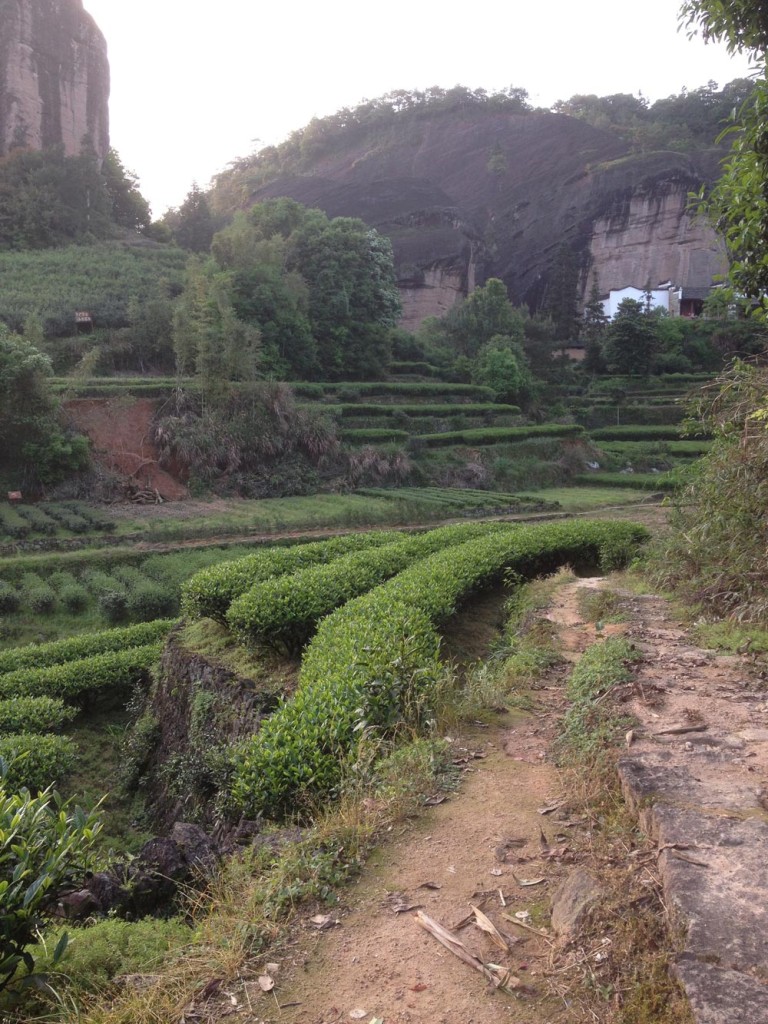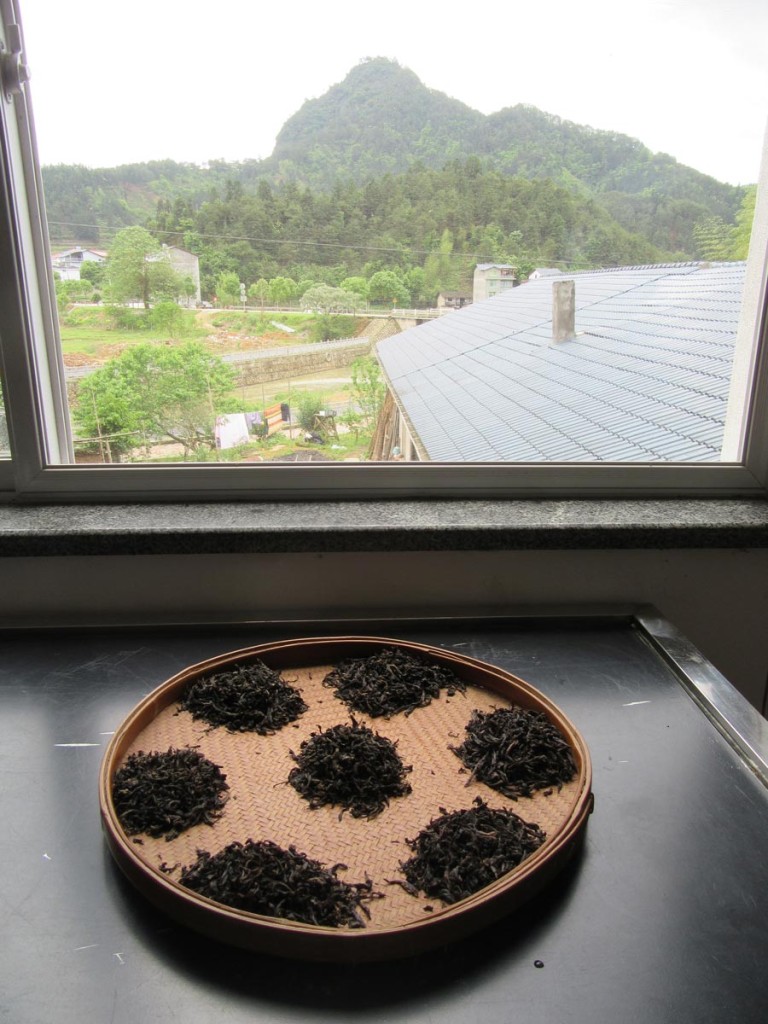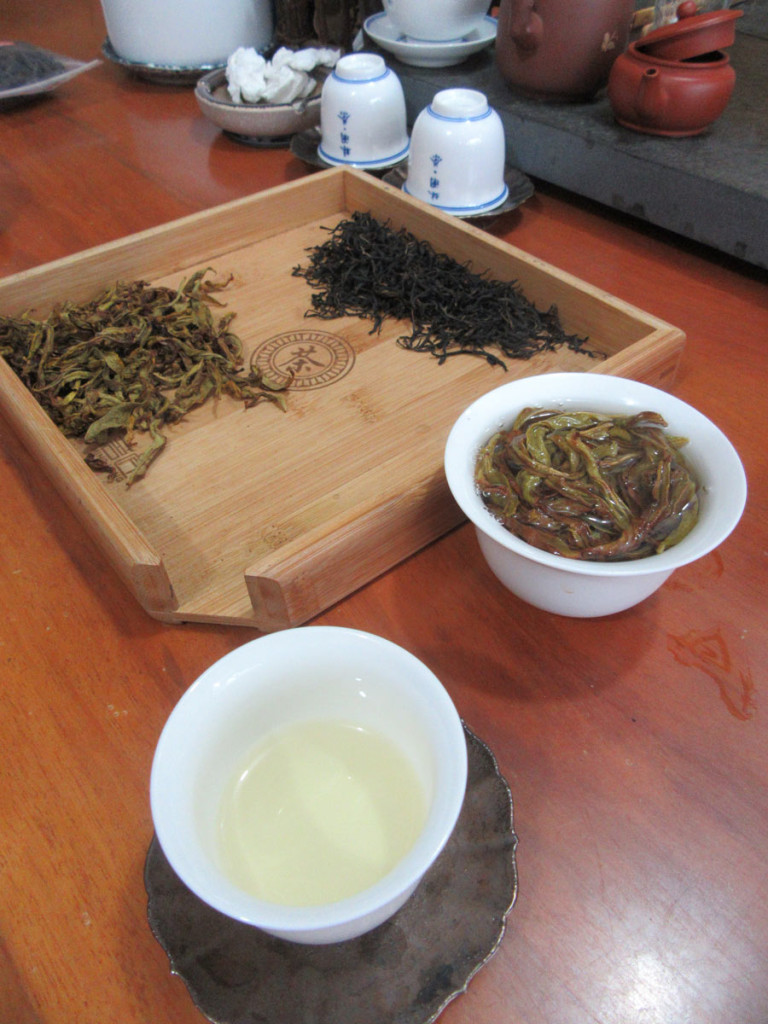This method of processing tea gets its name from the colour of the dry leaves – thanks to a very short oxidation process they often remain a beautiful grass green.
Green tea is relatively simple in terms of processing – the leaves are brought down from the plantation to the tea factory, allowed to wilt on air screens and then the oxidation is stopped by heat.
There are 2 methods used to stop oxidation: Chinese and Japanese. In China, this involves the tea leaf coming into contact with a hot metal surface – a pan, a hot plate… In Japan, on the other hand, they use hot steam to stop oxidation.

Kapitoly
General basics around tea
Green tea is a beverage that catches the eye not only because of its taste, but especially because of its green colour, which stands out especially with distinctive varieties such as Matcha or Gunpowder.
What it is and how it is grown
Green tea is tea that has not undergone fermentation or only briefly during processing. Therefore, the leaves retain their original green color, which also appears in the color of the infusion. This is due to the minimal loss of chlorophyll during drying, which is lost during fermentation and therefore black teas do not have it.
Green tea is a light beverage and has a high tannin content, which produces a slightly astringent taste. However, this can be influenced by adding sugar or honey to the tea.
It is grown on tea plantations in China, India, Japan, Korea and the Middle East.
They are hand-picked by women working on the plantation and placed in wicker baskets placed on their backs. The tea is then dried in direct sunlight or under a shelter, spread out on mats. The method of drying depends on the type of tea and also affects its taste.
You can also grow your own tea plants at home in a pot. It thrives in direct sunlight and plenty of watering. In summer you can put it outside, but it must not go through frost, as it is a thermophilic plant from subtropical China.

How to drink
You can drink green tea loose or in a bag. Loose tea is put in a strainer 1 teaspoon per cup. You can also put it in a teapot and make more infusions. Compared to black tea, it is suitable for a longer infusion, but you must take into account the higher tannin content.
The first infusion of green tea should take no longer than two minutes, so you get a very mild flavour with a low tannin content and very little bitterness. You can enjoy the subtle aromas contained in the tea.
Green tea should be served in a transparent glass to bring out its deep green colour. It is strongly sweetened with sugar, cane sugar, honey, acacia syrup, maple syrup or other sweeteners.
The temperature of the water should not exceed 80 °C.
The preparation of matcha green tea is a little different. The tea leaves are ground into a fine powder which is not broken off and thrown away, but drunk at the same time as the water. A special bamboo whisk, designed specifically for mixing Matcha tea, is used to stir it. Milk is also often added to this specific green tea or prepared as a latte or iced latte.
All types of green tea can be prepared not only hot, but also as an iced drink. The tea is brewed at the appropriate temperature in a small amount and then cooled with ice cubes and a splash of cold water or mineral water.

The most famous types of green teaSencha and Bancha, like Matcha, are Japanese teas.
They are drunk throughout the day and are the most widely consumed teas in the Japanese islands.
Dragon’s Well, Dragon Mountain and Long Eyebrows are Chinese teas that have made their way to us and are very popular. Along with other teas, they come from China’s Zheijang province, which is the cradle of tea. Most types of green, black, yellow and white teas are grown here.
Interestingly, flowering teas are also produced here, which are created by bundling green teas with white teas and various flowers, sourced from local hillsides and plantations.
Vietnamese green teas are characterised by flavours of jasmine or lotus, which are specific to the region. The most famous is Che Thai Nguyen or Suoi Giyang.

Health Benefits
Green tea is very beneficial for health. It is an important antioxidant and strengthens the immune system. It contains flavonoids, tannins, caffeine, saponins, catechins, trace elements and vitamins C, K and a wide range of B group.
It acts as a preventive agent against cancer, cardiovascular diseases, inflammation, dental diseases, infections, rheumatism and multiple sclerosis. Drinking this tea regularly is very effective for the human body health-wise. It also helps to cure joint diseases, strengthens cartilage and has a beneficial effect on the brain. It heals the psyche and diseases associated with it.
Acts against depression and neurological disorders.
It also removes fatigue and exhaustion. Due to the fact that it is not overly fermented, it contains a small amount of caffeine, so it does not have as strong a stimulating effect as black tea. It is good to drink it during the day rather than in the morning when you need strength for the day.

Green tea should be sipped regularly as a disease preventative, but also as a stimulating drink. This will protect you from the onset of disease or help to cure it. It is an ideal complement to a varied and balanced diet.
